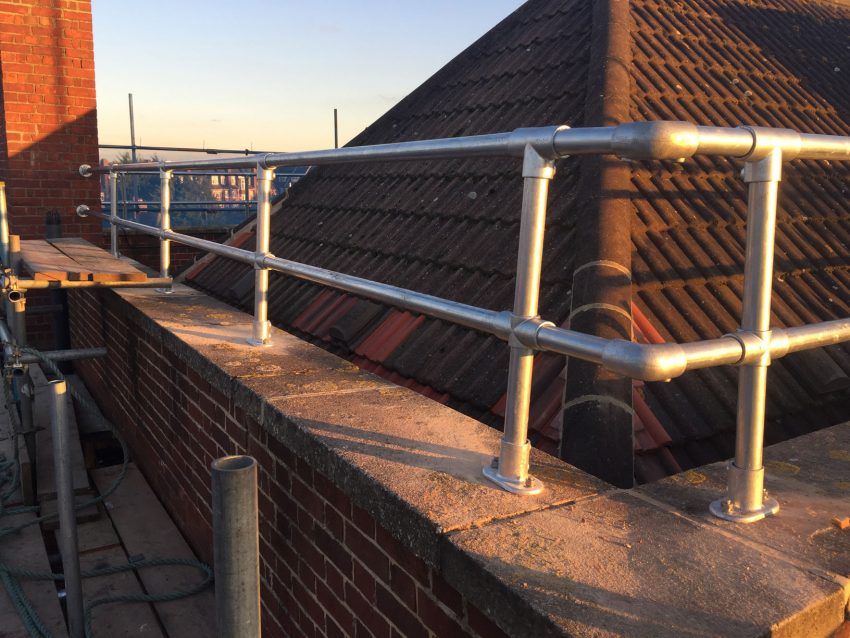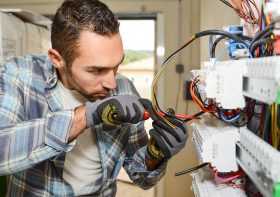EDGE PROTECTION : A SHORT GUIDE

Edge protection with steadfast.
Edge protection is a system (usually in the shape of a guardrail) designed to prevent users from falling off heights (roofs or mezzanines, etc.) and to avoid injury to passersby. Edge protection can either be temporary or permanent, depending on the scope and duration of the project.
Here are a few examples of edge protection.
- Free standing guardrails.
- Fixed Handrail Systems.
When does edge protection become necessary?
HSE states that edge protection in the UK is mandatory whenever there is an increased risk of falling over 2 meters. Building managers can install railings or other safety systems in areas where there are potential fall hazards.
At what distance from the edge of the roof is fall protection required?
The position of a guardrail depends on a number of factors, including the type of roof, its layout (is there a parapet, etc.), and even the kind of guardrail chosen. You should always consult with experts to get advice on your particular situation.
Do I need a harness if there is edge protection?
If edge protection is installed, harnesses are not usually required. However, here are some scenarios where PPE may be needed:
- A harness may be needed if the edge protection system doesn’t cover the entire surface of the edge (especially when it comes to roofs).
- A worker who needs to reach a space outside the edge protection system will need additional protection against falls. This extra protection could be a lifeline with a harness attached or a walkway (with a handrail around it or a safety line).
What is the standard for roof edge protection, and what are its requirements? What is BS13700:2021, the new wind speed standard?
There are a number of standards in the UK that relate to temporary and permanent edge guards.
In 2021, the newest standard was developed to provide specific guidance on permanent counterbalanced edge protection. The new standard BS 13700:2021, which addresses the manufacturing and testing of this type of edge protection, lays down recertification regulations, and provides details on site-specific wind calculation for such systems, was adopted in 2021.
The introduction of a mandatory System Technical File is one of the key aspects of BS 13700. This file must be created for every permanent edge protection system. The file must include information on the following:
- The design and layout of edge protection
- Design calculations and
- Calculations of wind speed allow compatibility, safety, and operational suitability to be assessed.
You will have to test any existing edge protection that is permanently installed on the roofs of buildings you are responsible for in order to comply with the new standards.
When should roof edge protection be retested?
Roof edge systems should be checked periodically.
- On installation, ensure that the construction is in accordance with the manufacturer’s instructions and regulations.
- To ensure the system is in good condition and free of damage, it should be checked at least once every 12 months.
Our team can help if you need a roof edge system for the building you manage or if you require an inspection and recertification for an existing edge structure.




Leave a Reply